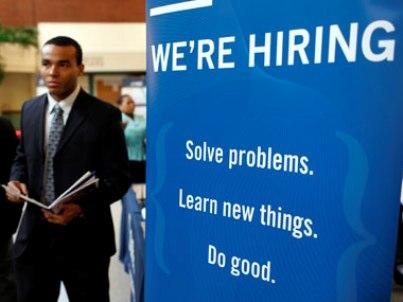Photographs: Reuters Bibhu Ranjan Mishra in Bangalore
The Durbin-Grassley Bill might have fallen through but large Indian information technology service providers are taking no more chance of being seen as job snatchers in the US.
The Bill, introduced in 2009, proposed that no employer be allowed to hire more H1B visa holders unless local Americans were more than half of the staff on their rolls.
Top Indian firms such as Infosys, Tata Consultancy Services (TCS) and Wipro have started making whole-hearted efforts to raise local hiring in the US. This includes campus hiring, delivery and training centers and reducing dependency on visas, especially the L1 visas.
For Realtime News on Durbin-Grassley Bill, ...
Indian IT firms step up hiring in the US
Image: Infosys hired about 1,000 locals in the US in the past 24 months.Infosys, the country's second largest IT services company, hired about 1,000 locals in the US in the past 24 months. It now wants to hire about 500 Americans in a single quarter (January-March) this year.
It has also planned a full-fledged delivery centre in the US, where it will be able to recruit people locally, train and deploy them in projects, much on the same lines of what it does in India, where its large delivery centers are located.
"We are looking at it very seriously. We have some near-shore centers, but we want to create a delivery centre in the US like what we have in India, with training and hiring capability," said V Balakrishnan, chief finance officer and board member.
...
Indian IT firms step up hiring in the US
Photographs: Punit Paranjpe/Reuters
During its quarterly earnings call last week, Wipro said the company was making all efforts to increase the percentage of local employees in the countries it operates to about 50 per cent in two-three years as against the present 38 per cent.
In its Atlanta development centre in the US, where it employs 600 people, about 60 per cent are local Americans, said company sources.
"The interesting thing is that we have not lost any opportunity because of visa restrictions, by significantly increasing locals in onsite locations. We have started recruiting from campuses now," Azim Premji, chairman of Wipro, said recently.
...
Indian IT firms step up hiring in the US
"Our objective is to build a strong cadre of local people, whether be it in the United States, Europe, the West Asia, Latin America or China."
India's largest IT services company TCS is hiring locally for centres in Cincinnati, Dallas, Milford and Phoenix. The company has also started making campus offers in the US, it's biggest geography by revenue.
"We have so far made 120 campus offers, of which 70 have been accepted," Ajoy Mukherjee, executive vice-president and head of global human resources, had told Business Standard in a recent interview.
...
Indian IT firms step up hiring in the US
Photographs: Reuters
The challenge is to get the right talent, since there is a shortage of technical people in the US. According to Wipro, since it is difficult to get lateral entry (people with experience) employees in the US, the company was focusing on hiring freshers from colleges.
Infosys is planning to re-skill people in the US by looking at the shortage in specific technologies and areas. The company says once its proposed development centre in the US is operational, it will help the company to do so.
"In India, IT companies invest significantly in re-skilling employees. We need to set up the development centre to start training and re-skilling of people in the US," said Nandita Gurjar, senior VP & group head of HR.
Infosys has a little over 8,000 employees in the US, of which 1,500 are local Americans. For calendar year 2011, it had applied for 2,000 H1B visas, less than that of previous years.







article